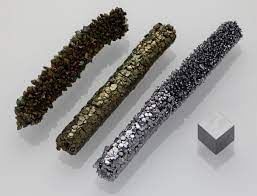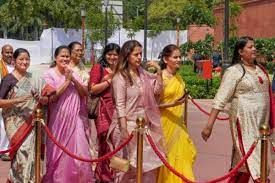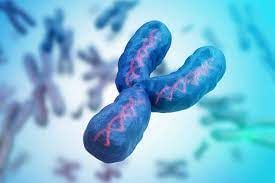UPSC Daily Current Affairs- 20th September 2023 | Current Affairs & Hindu Analysis: Daily, Weekly & Monthly PDF Download
GS-I
UNESCO Heritage Status for Hoysala Temples in Karnataka
Subject: Art and Culture

Why in News?
The Hoysala temples located in Belur, Halebid, and Somanathapur in Karnataka were granted UNESCO World Heritage status, marking a significant moment for these architectural marvels.
Hoysala Temples and Their Nomination
- Previous Recognition: The Chennakeshava temple at Belur and the Hoysaleshwara temple at Halebidu, both situated in Hassan district, have been on UNESCO’s tentative list since 2014.
- Expansion of the Nomination: The Keshava temple at Somanathapur in Mysuru district was included in the tentative list alongside the other two temples. The Center officially nominated all three as India’s entry for 2022-23 in February 2022.
Distinctive Features of the Hoysala Temples
- Distinct Architectural Style: The Hoysala temples are renowned for their distinctive architectural style characterized by ornate designs and a stellate plan built on raised platforms.
- Unique Material: These temples are constructed using choloritic schist, commonly known as soapstone, which is soft and amenable to intricate carving.
- Artistic Signatures: Many sculptures within the temples bear the signatures of the artists, a unique feature in Indian art history.
- Intricate Carvings: The doorways of these temples feature intricate carvings, showcasing the remarkable craftsmanship of Hoysala artists.
Historical Timeline
- Chennakeshava Temple at Belur: Construction began in 1117 CE during the reign of King Vishnuvardhana and was completed in 1220 CE.
- Hoysaleshwara Temple at Halebid: Commissioned in 1121 CE.
- Keshava Temple at Somanathapur: Commissioned by Somanatha Dandanayaka in 1268 CE during the rule of Narasimha III.
Impact on Tourism and Future Focus
- Global Recognition: The UNESCO World Heritage status is expected to bring global recognition to these temples and boost tourism in the region.
- Enhancing Amenities: Authorities plan to address any concerns raised by UNESCO and focus on improving tourist amenities, including signage and connectivity.
- Management Action Plan: A management action plan will be implemented to preserve and promote these heritage sites.
Source: Times of India
Vanadium
Subject: Geography

Why in News?
After lithium in Kashmir, rare metal vanadium, key for batteries, found off Gujarat coast
- About Vanadium:
- It is a chemical element with the symbol "V" and atomic number 23.
- It is a silver-gray, ductile, and malleable metallic element.
- It is harder than most metals and exhibits good corrosion resistance against alkalis and acids.
- History:
- It was discovered (1801) by the Spanish mineralogist Andrés Manuel del Río, who named it erythronium but eventually came to believe it was merely impure chromium.
- The element was rediscovered (1830) by the Swedish chemist Nils Gabriel Sefström, who named it after Vanadis, the Scandinavian goddess of beauty and youth.
- The English chemist Henry Enfield Roscoe first isolated the metal in 1867 by hydrogen reduction of vanadium dichloride.
- Occurrence:
- Found combined in various minerals, coal, and petroleum, vanadium is the 22nd most abundant element in Earth’s crust.
- It is found in over 60 different minerals, including vanadinite, carnotite, roscoelite and patronite.
- The largest resources of vanadium minerals are found in South Africa and Russia.
- Leading Producers: China, South Africa, and Russia.
- Applications:
- Alloys:
- One of the primary uses of vanadium is as an alloying element in steel and other metals.
- Vanadium steel, for example, is known for its strength, toughness, and ability to maintain hardness at high temperatures. It is commonly used in tools, cutlery, and structural materials.
- In Vanadium Flow Batteries (VFBs), vanadium is used to create a reliable, safe and stable solution for the storage of renewable energy.
- Chemical Catalysts: Vanadium compounds are used as catalysts in various chemical reactions, such as the production of sulfuric acid.
- Nuclear Applications: Vanadium is used in some nuclear reactors as a structural material and neutron moderator.
- In the medical sphere, vanadium is used to treat a number of ailments, including diabetes, heart disease and high cholesterol.
- Alloys:
Key Facts about Gulf of Khambhat:
- It is an inlet of the Arabian Sea along the west coast of India, in the state of Gujarat.
- Earlier, it was known as the Gulf of Cambay.
- Stretching for about 80 miles, it divides the Kathiawar Peninsula from the south-eastern part of Gujarat.
- Rivers: The Narmada, Tapti, Mahi, and Sabarmati rivers drain into it.
- Geography:
- It is a relatively shallow and enclosed body of water, characterized by its tidal movements and extensive mudflats.
- It is known for having one of the highest tidal ranges in the world, with tides that can rise and fall dramatically.
- There are some coral reefs around small inlets in the western part of the Gulf.
Source: Times of India
GS-II
India – Canada Relations
Subject: International Relations

Why in News?
Recently Canadian trade negotiations with India have been postponed indefinitely due to suspension and concerns over pro-Khalistan activities.
About India – Canada Relations:
Political:
- India established diplomatic relations with Canada in 1947.
- Prime Minister of India’s visit to Canada in April 2015 elevated the bilateral relation to a strategic partnership.
- India and Canada share commonalities in Parliamentary structure and procedures.
- After the general election in October 2019, Mr Raj Saini, MP from the House of Common has been appointed as the Chair of the Canada-India Parliamentary Association.
- In India, Canada is represented by the High Commission of Canada in New Delhi.
- India is represented in Canada by a High Commission in Ottawa and by consulates in Toronto and Vancouver.
Commercial relations:
- An annualised Trade Ministers dialogue has been institutionalised to review trade and economic relations.
- Both sides are engaged in technical negotiations for a Comprehensive Economic Partnership Agreement (CEPA) including trade in goods, services, investment, trade facilitation etc.
- India is Canada’s 9th largest export market
- India exports include gems, jewellery and precious stones, pharmaceutical products, readymade garments, light engineering goods, iron & steel articles, etc.
- India’s import from Canada include pulses, newsprint, wood pulp, asbestos, potash, iron scrap, copper, minerals and industrial chemicals, etc.
Science and Technology:
- ISRO and CSA (Canadian Space Agency) have signed MOUs for cooperation in the field of exploration and utilization of outer space and two Implementation Arrangements specifically addressing satellite tracking and space astronomy has also been signed.
- ANTRIX, the Commercial arm of ISRO has launched many Canadian Satellites.
- Department of Biotechnology under IC-IMPACTS program implements joint research projects in health care, Agri-biotech and waste management.
- Department of Earth Science and Polar Canada have started a programme for exchange of knowledge and scientific research on Cold Climate (Arctic) Studies.
Security and Defence:
- India and Canada have signed a Mutual Legal Assistance Treaty in 1994 (operationalised in 1998) and Extradition Treaty in 1987.
- There is robust cooperation on counter terrorism issues particularly through the framework of the JWG on Counter Terrorism.
- India and Canada collaborate closely in international fora, particularly through the United Nations, Commonwealth Nations and G-20.
Indian diaspora:
- Canada hosts one of the largest Indian diasporas in the world, numbering 1.6 million (PIOs and NRIs) which account for more than 4% of its total population.
- The diaspora has done commendably well in every sector in Canada.
- In the field of politics, in particular, the present House of Commons (total strength of 338) has 22 Members of Parliament of Indian origin.
Challenges associated with the relations:
- Sikh extremism: Sikhs constitute a significant proportion of the Indian diaspora; they make up less than one percent (a little over 500,000) of Canada’s total population.
- The issue of Sikh separatist groups operating in Canada has become a growing source of tension between India and Canada.
- The Ontario Provincial Parliament adopted a resolution terming the 1984 anti-Sikh riots as ‘genocide’ and many other Canadian leaders also support that even today.
- India’s structural impediments: India still has to overcome structural impediments such as complex labour laws, market protectionism, and bureaucratic regulations.
- Inadequate trade: While India–Canada economic relations have made some progress; Canada remains an insignificant trading partner for India.
Way Forward:
There is enough potential for both India and Canada to boost the cooperation and take their relations to next level. But it requires Canadian effort by widening their Indian perspective. This can happen if India by diverting the talks from politically contentious issues. The Indian media, the government and even politicians in Punjab need to realise that Sikhs based in Canada, the U.K. and the U.S. may have different political views. Similarly, non-violent support for a cause cannot be labelled as a militant activity.
Source: The Hindu
Women’s Reservation Bill: A Long Road Ahead
Subject: Polity and Governance

Why in News?
The Indian government introduced The Constitution (One Hundred and Twenty-eighth Amendment) Bill, 2023, aimed at providing 33% reservation to women in the Lok Sabha and state Legislative Assemblies.
- However, this endeavor is not new, dating back to the mid-1990s.
Women’s Reservation Bill: Overview
- Reservation Provisions: The Bill proposes to reserve one-third of the seats in the Lok Sabha and state Assemblies for women, including those belonging to Scheduled Castes and Scheduled Tribes.
- Constitutional Amendments: Similar to a previous Bill from 2010, this one introduces new articles (330A and 332A) in the Constitution to effect these changes.
- Sunset Clause: The Bill includes a sunset clause, stipulating that the reservation will be applicable for 15 years from the Act’s commencement.
Discourse on Women’s Reservation
- Pre-Independence Demands: The discussion on women’s reservation dates back to the pre-Independence era, where various women’s organizations advocated for women’s political representation.
- Recommendations: Several recommendations and reports, such as the 1955 committee’s proposal for 10% reservation in Lok Sabha and State legislative assemblies, set the stage.
- National Perspective Plan: The National Perspective Plan for Women in 1988 called for 30% reservation in all elected bodies.
- Panchayati Raj Act (1993): A significant step was the amendment of the Panchayati Raj Act in 1993, reserving 33% of seats in local government bodies for women.
- Rajya Sabha Approval (2010): The Women’s Reservation Bill, introduced in 1996, finally gained momentum and was approved by the Rajya Sabha on March 9, 2010.
Practical obstacles in Implementation
(a) Delimitation Process Dependency:
- Crucial Condition: The Bill links the implementation of women’s reservation to the delimitation process, which could significantly delay its enactment.
- Impact of Census: Delimitation would occur after the publication of Census results, with the 2021 Census delay potentially affecting the timeline. Assuming the Census results are published after 2026, this could serve as the basis for delimitation of constituencies.
- Operational Timeline: Given the current circumstances, women’s reservation might not be effective in the Lok Sabha until the general elections of 2029.
(b) Seat Identification Uncertainty:
- Lack of Specifics: The Bill does not specify how the reserved seats will be identified, leaving this crucial aspect to be addressed by a separate law. Past proposals suggested rotation and a draw of lots method to determine reserved seats, but the government’s exact approach remains unclear.
(c) Current Seat Reservation Process
- SCs and STs: The Delimitation Act, 2002, lays down principles for reserving seats for Scheduled Castes and Scheduled Tribes based on population distribution.
(d) Constitutional Amendments Required:
- Amendment Necessity: To operationalize the women’s reservation scheme, amendments to Articles 82 and 170(3) of the Constitution are essential.
- Impact on Panchayati Raj: While reservation for women exists in Panchayati Raj institutions, it operates under Article 243D and has achieved significant representation in several states. According to government data as of September 8, 2021, in at least 18 states, the percentage of women elected representatives in Panchayati Raj institutions was more than 50%.
Challenges to Female Representation
- Party Ticket Allocation: Despite pledges in party constitutions, records show that women candidates receive disproportionately fewer party tickets, often relying on family political connections.
- Perceived Electability: The belief that women candidates are less likely to win elections hampers their ticket allocation.
- Structural Barriers: Demanding and time-consuming election campaigns, coupled with family responsibilities, deter many women from active participation.
- Vulnerability: Women politicians face humiliation, abuse, and threats, making participation even more challenging.
- Financial Constraints: High campaign costs, limited financial independence, and lack of party support create hurdles for women candidates.
- Internalized Patriarchy: Many women prioritize family and household duties over political ambitions due to ingrained patriarchal norms.
Significance of Women’s Participation in Lawmaking
- Political Empowerment: Legislative representation empowers women to participate in lawmaking and hold the government accountable.
- Gender Parity Indicator: Women’s presence in national parliaments reflects gender equality progress in politics.
- Unique Skills: Women bring diverse skills to politics, serve as role models, and advocate for gender justice.
- Advocating Women’s Interests: Female politicians represent women’s interests in state policies, bridging the gap between representation and participation.
- Efficiency and Integrity: Studies show that women legislators excel economically, exhibit lower criminality and corruption rates, and are more effective and less susceptible to political opportunism.
Need for such Reservation
- Ensuring Representation: Reservation guarantees women’s presence in decision-making bodies, addressing underrepresentation.
- Encouraging Entry: Reservation encourages women to enter politics, contest elections, and engage in the political process.
- Capacity Building: Participation in legislative processes enhances women’s political capacity, nurturing effective leaders.
- Changing Perceptions: Reservation shifts societal attitudes toward women in politics, challenging stereotypes and promoting participation.
- Promoting Gender-Sensitive Policies: Women politicians advocate for gender-sensitive policies addressing issues like violence against women and discrimination.
Conclusion
- Pressing Need: The Women’s Reservation Bill is long overdue, with women waiting for their rightful place in governance and nation-building.
- Untapped Potential: Women’s leadership qualities are undeniable, and their participation is essential for India’s progress.
- Call for Action: As India aspires to be a global leader, it must prioritize women’s political empowerment and pass the Women’s Reservation Bill without further delay.
Source: Indian Express
GS-III
Y chromosome
Subject: Science and Technology

Why in News?
Researchers assemble the first complete sequence of a human Y chromosome.
About Y chromosome:
- The Y chromosome is one of the two sex chromosomes in humans (the other is the X chromosome).
- The sex chromosomes form one of the 23 pairs of human chromosomes in each cell.
- The Y chromosome is very small. It likely contains 50 to 60 genes and represents 2% of a cell's total DNA.
- Each person normally has one pair of sex chromosomes in each cell.
- The Y chromosome is present in males, who have one X and one Y chromosome, while females have two X chromosomes.
- Genes in Y Chromosome:
- Because only males have the Y chromosome, the genes on this chromosome tend to be involved in male sex determination and development.
- The Y chromosome is relatively small and contains fewer genes compared to the X chromosome.
- This has led to its characterization as the "male-determining" chromosome, as its primary role is to initiate and control male development.
- While the X chromosome contains genes related to various functions throughout the body, the Y chromosome focuses on male-specific traits.
- SRY Gene: The Y chromosome contains a critical gene called the Sex-Determining Region Y (SRY) gene. Sex is determined by the SRY gene, which is responsible for the development of a fetus into a male.
- Other genes on the Y chromosome are important for enabling men to father biological children (male fertility).
- Genetic Disorders:
- Mutations or deletions of genes on the Y chromosome can lead to various genetic disorders and infertility in males.
- For example, deletions in the AZF (Azoospermia Factor) region of the Y chromosome can cause male infertility by affecting sperm production.
Source: DTE
India’s Supply Chain Opportunity
Subject: Economy

Why in News?
The announcement at the G20 Leaders’ Summit on the landmark India-Middle East-Europe Economic Corridor (IMEC) has the potential to make India an Asian hub in global supply chains.
About Supply Chains:
- It refers to the geographical location of stages of production (design, production, assembly, marketing, service activities) in a cost-effective manner.
- Global supply chains have been the leading model of industrial production since the 1980s, influencing the pace and nature of globalisation and regionalisation.
- Global supply chains can be found in a wide range of simple industries such as textiles and clothing, food processing and consumer goods, etc. and complex industries such as automotives, aircraft, machinery, electronics and pharmaceuticals.
Reasons for the shift in global supply chains away from China:
- Supply chain bottlenecks: China’s rapid economic growth led to supply chain bottlenecks, particularly in transportation and logistics.
- Regulatory concerns: Foreign firms operating in China have faced increasing regulatory scrutiny.
- Rising wages: China’s labor costs have been steadily increasing over the years, reducing its cost advantage as a manufacturing hub.
- Trade war with the USA: The trade tensions and tariffs resulting from the trade war between China and the United States have created uncertainties and risks for companies with supply chains heavily reliant on China.
- Significant export declines: In the last quarter of 2022 exports from mainland China decreased by 15% year-on-year.
Reasons for India’s emergence as an attractive supply chain hub:
- Global perspective: India’s ranking as the fifth-largest importer of intermediate goods in 2022 Q4 suggests a changing perception of its supply chain potential.
- India has the potential to double its 5% share of world exports of intermediate goods, indicating its growing role in global supply chains.
- India’s service sector, including IT, back-office operations, financial services, and logistics, holds growth potential.
- Competitive factors: India, like Southeast Asian countries, offers cost advantages to foreign companies, including cheap labor and fiscal incentives.
- India can complement China as a manufacturing hub, benefiting from technology transfers and creating value-added jobs.
- India’s automotive, pharmaceutical, and electronics assembly sectors are already advanced, positioning them as potential winners in the global supply chain landscape.
- India’s expanding trade horizons: The Indian government’s emphasis on preferential trade through bilateral agreements with partners like the UAE and Australia.
- Negotiations for a UK-India and EU-India FTA are in process.
- Skilled labour force: India has a large pool of skilled and educated workers, especially in sectors like information technology (IT), engineering, pharmaceuticals, and services.
- This skilled workforce can be beneficial for high-tech and knowledge-based industries.
- Diverse services offered by India’s IT sector: India excels in IT, back-office work, financial services, and logistics.
- Considering these factors, India is gaining attention as a key centre in global supply chains.
- Growing Industrial corridors: Foxconn is setting up a chip-making fabrication plant in Gujarat, and sectors like automotives and pharmaceuticals are flourishing.
Strategies for enhancing India’s manufacturing competitiveness:
- Easy Foreign Direct Investment (FDI) policy: Need to maintain an open-door policy toward FDI in manufacturing, facilitating investment at a high level and competitive fiscal incentives.
- Need to create modern special economic zones as public-private partnerships.
- Govt policies: The reduction of business hassles through digitalisation of tax, customs, and business administration, and high-quality free trade deals is essential.
- Local companies need smart business strategies to join global supply chains.
- Support SMEs: Small and mid-sized enterprises should work as suppliers or subcontractors to these large firms.
- Research and Development: States need to engage with think tanks to gain insights into effective policies and practices.
- Focus on targeted interventions in new industrial activities with comparative advantages.
- Investment in tertiary-level education, particularly in science, technology, engineering, and mathematics (STEM) is must.
Source: The Hindu
Red-necked phalarope
Subject: Environment and Ecology

Why in News?
Background:-Red-necked phalarope was seen recently in an urban water body in Coimbatore, Tamil Nadu.
- Red-necked phalarope (Phalaropus lobatus) is a shore bird that breeds in the Arctic region, that possibly made a halt during its flight to a coastal destination.
- Scientific Name: Phalaropus lobatus.
- It is a fairly small shorebird.
- It is known for spinning frantically on water to stir up small invertebrates.
- Distribution: both boreal and tundra zones between 60 and 70 degrees latitude.
- These phalaropes can be found in coastal regions of the Arctic Ocean, south to the Aleutians and Northwest to Britain.
- In the winter, it spends most of its time on the ocean.
- During this non-breeding season, phalaropes can be found off central-west South America, in the Arabian Sea, and from central Indonesia to western Melanesia.
- Food: The bird mainly feeds on small aquatic invertebrates and plankton.
- The female are brighter than males.
- Females are observed to be
- Polyandrous: mating with more than one male.
- The males brood chicks and feed them.
Conservation status:-
- IUCN: Least concern
Source: The Hindu
|
63 videos|5408 docs|1146 tests
|
FAQs on UPSC Daily Current Affairs- 20th September 2023 - Current Affairs & Hindu Analysis: Daily, Weekly & Monthly
| 1. What is the significance of UNESCO Heritage status for Hoysala Temples in Karnataka? |  |
| 2. How does the Y chromosome relate to the topic mentioned in the article? |  |
| 3. What is the Women's Reservation Bill and why is it considered a long road ahead? |  |
| 4. What is India's supply chain opportunity mentioned in the article? |  |
| 5. What is the connection between Vanadium and India-Canada relations discussed in the article? |  |
















